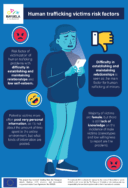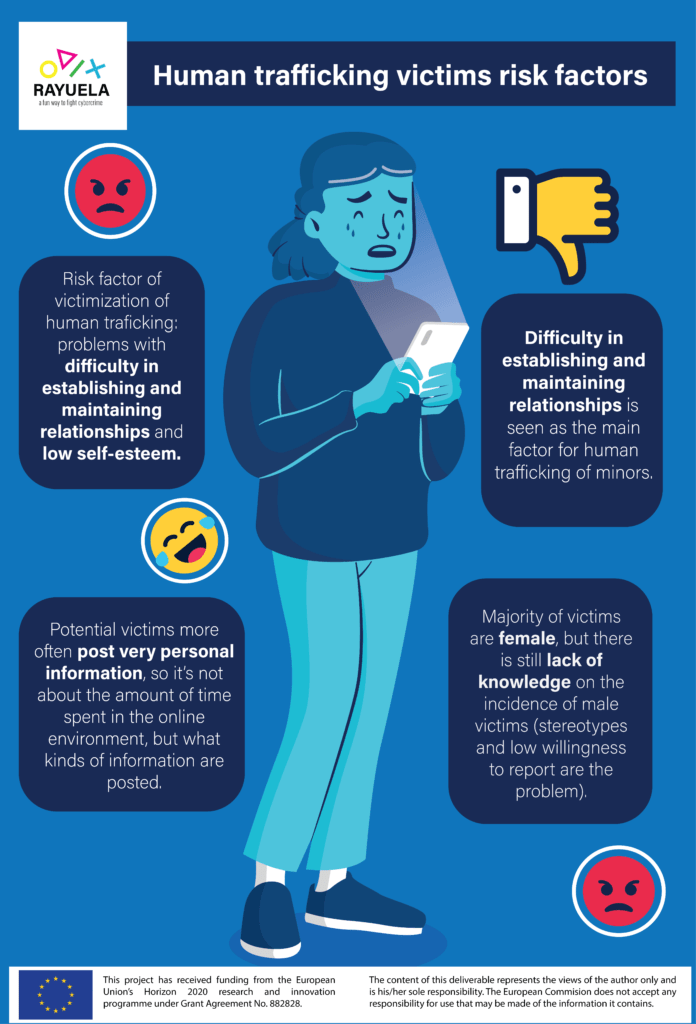Human trafficking victims risk factor
It is a popular belief, both in media and politics, that the victims of human trafficking are a specific group of especially vulnerable and defenceless girls (e.g. Snajdr, 2013; Weitzer, 2007; 2013). However, both literature and our own investigation at the very least nuanced this view on victims of human trafficking for the purpose of sexual exploitation. This is not to say that vulnerable girls are not at a heightened risk of being victim of human traffickers, but rather that this scope is overly restrictive in terms of potential victims, especially with regard to the problem of loverboys, and that the potential pool of targets of human traffickers is thus far more diverse than the popular master narrative portrays it to be. In this context, there is increasing consensus among researchers, that there are no really typical victim profiles to be found in case of human trafficking (e.g. Twis, 2020a; 2020b), a finding that was underlined in the expert interviews as well. As a result, a plethora of potential risk factors has been put forth in literature and by the experts, and any combination of them may be present in a given case of human trafficking.
Notwithstanding the absence of such typical profiles, we did find some common denominators in literature and through our research. The principal risk factors for victimization of human trafficking are problems with attachment and the low self-esteem that often accompanies it. The concept of attachment ought to be interpreted in the broad sense, as appeared from the interviews conducted with various experts . In line with existing scholarship on the matter, problems with attachment can refer to weak social bonds with family or significant others, not feeling understood as a person, looking for a clear identity, a history of adverse childhood experiences (such as maltreatment, earlier sexual abuse, absence of parental investment, unmet needs, and emotional detachment). Many ways lead to Rome and as such each of these factors or any combination thereof can be considered risk factors for human trafficking for the purpose of sexual exploitation. In the expert interviews, however, it was underlined that these are relatively general risk factors that do not lead to human trafficking in the majority of cases.

